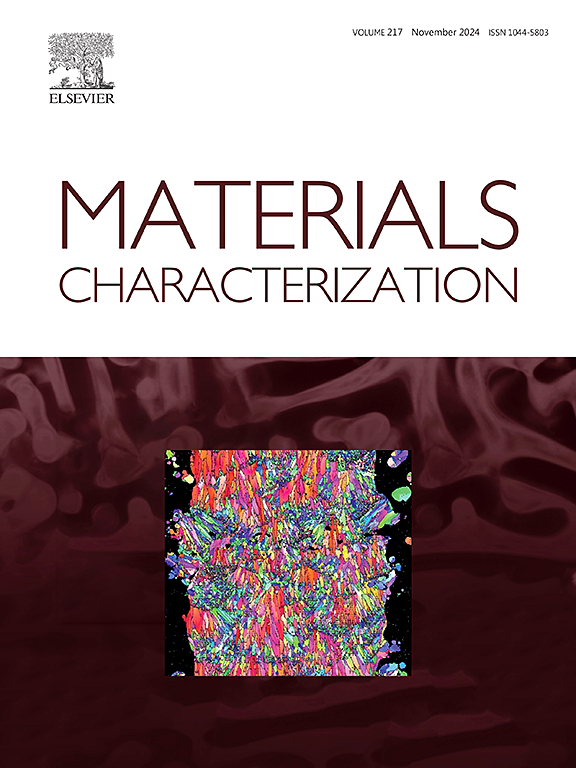Crystal lattice rotations during shear band formation in pure titanium deformed at high strain rate
IF 4.8
2区 材料科学
Q1 MATERIALS SCIENCE, CHARACTERIZATION & TESTING
引用次数: 0
Abstract
The study addresses the formation of shear bands in polycrystalline titanium subjected to dynamic deformation at room temperature. Hat-shaped samples were cut from a hot-extruded rod, both along and perpendicular to the extrusion direction, and then deformed at a strain rate of 4.9 × 103 s−1 using a drop hammer. Structural and textural analyses were performed on the axial sections of the samples using a scanning electron microscope equipped with an electron backscatter diffraction device. Regardless of the initial texture of the samples, a pronounced, oriented rotation of the crystal lattice was observed in grains located within the strain localization region. The primary rotation trend oriented the {0001} planes perpendicular to the shear plane and parallel to the loading direction, with one of the {1−100} planes aligned parallel to the shear plane, whereas a 〈11−20〉 direction, common to both planes, was aligned parallel to the shear direction. This crystal lattice rotation mechanism observed in grains of the strain localization region facilitates slip propagation across grain boundaries without an apparent change in the shear direction.
求助全文
约1分钟内获得全文
求助全文
来源期刊

Materials Characterization
工程技术-材料科学:表征与测试
CiteScore
7.60
自引率
8.50%
发文量
746
审稿时长
36 days
期刊介绍:
Materials Characterization features original articles and state-of-the-art reviews on theoretical and practical aspects of the structure and behaviour of materials.
The Journal focuses on all characterization techniques, including all forms of microscopy (light, electron, acoustic, etc.,) and analysis (especially microanalysis and surface analytical techniques). Developments in both this wide range of techniques and their application to the quantification of the microstructure of materials are essential facets of the Journal.
The Journal provides the Materials Scientist/Engineer with up-to-date information on many types of materials with an underlying theme of explaining the behavior of materials using novel approaches. Materials covered by the journal include:
Metals & Alloys
Ceramics
Nanomaterials
Biomedical materials
Optical materials
Composites
Natural Materials.
 求助内容:
求助内容: 应助结果提醒方式:
应助结果提醒方式:


